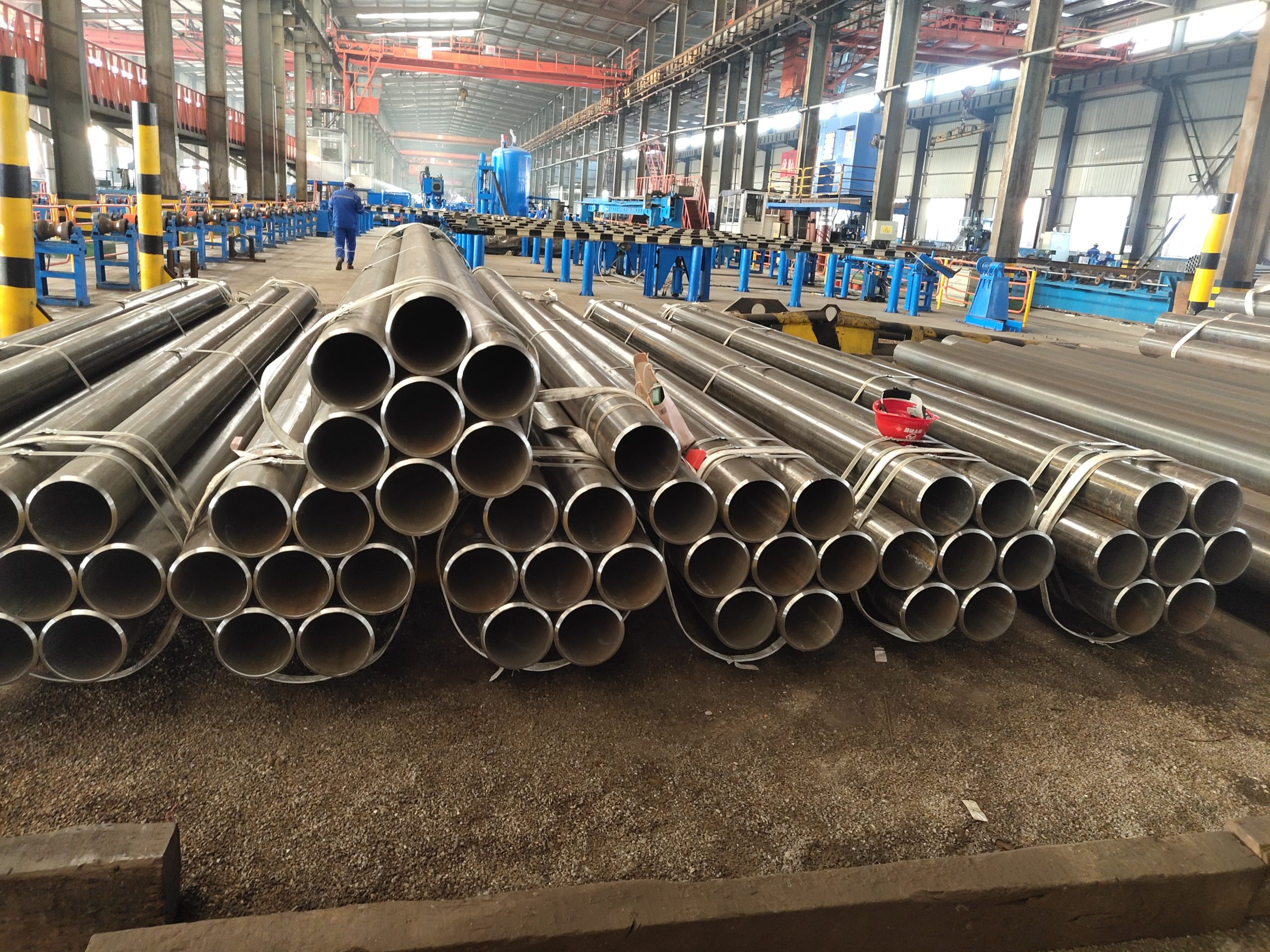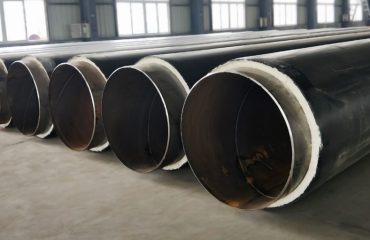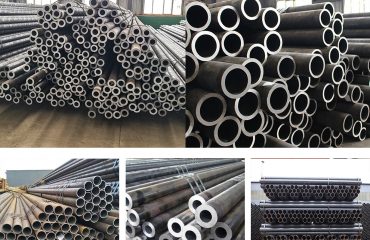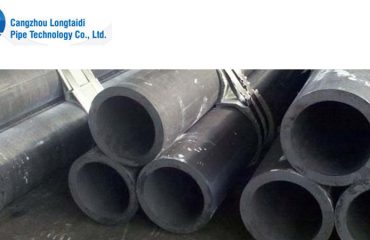
The Importance of ERW Line Pipe, ERW Casing, and ERW Structure Tube in High Pressure and High Temperature Applications
Introduction
In the world of industrial applications, there is a constant need for reliable and efficient piping systems that can withstand high pressure and high temperature conditions. This is where ERW (Electric Resistance Welded) line pipe, ERW casing, and ERW structure tube come into play. These types of pipes are specifically designed to meet the demanding requirements of various industries, such as oil and gas, construction, and infrastructure development.
In this article, we will explore the features, applications, and benefits of ERW line pipe, ERW casing, and ERW structure tube. We will also discuss the tolerance of outside diameter, wall thickness, chemical analysis, and mechanical properties of these pipes. So, let’s dive in!
ERW Line Pipe
ERW line pipe is a type of steel pipe that is used for transporting various fluids, such as oil, gas, and water, over long distances. It is manufactured by forming a hot-rolled coil into a cylindrical shape and then welding the edges using high-frequency current. This welding process ensures a strong and durable bond between the pipe sections.
Tolerance of Outside Diameter
The tolerance of the outside diameter of ERW line pipe depends on the standard and grade of the pipe. For example, according to API 5L standard, the tolerance ranges from +1.6mm to -0.4mm for pipe sizes ranging from 219.1mm to 273.1mm. Similarly, for pipe sizes ranging from 274.0mm to 320mm, the tolerance ranges from +2.4mm to -0.8mm.
Tolerance of Wall Thickness
The tolerance of the wall thickness of ERW line pipe also varies based on the standard and grade. For API 5L grade A and B, the tolerance ranges from +15% to -12.5% for pipe sizes ranging from 219.1mm to 457mm. For higher grades like X42-X80, the tolerance ranges from +19.5% to -8% for pipe sizes ranging from 508mm to 610mm.
Chemical Analysis and Mechanical Properties
Different grades of ERW line pipe have different chemical compositions and mechanical properties. For example, API 5L grade B has a carbon content of 0.26%, a manganese content of 1.20%, and a maximum sulfur and phosphorus content of 0.030%. Its minimum tensile strength is 414 MPa, and its minimum yield strength is 241 MPa.
ERW Casing
ERW casing is a type of steel pipe that is used as a protective sleeve for oil and gas wells. It serves as the wall of the well, providing structural support and preventing the collapse of the wellbore. ERW casing is manufactured according to the API SPEC 5CT standard, which ensures its quality and reliability.
Specification
ERW casing comes in various sizes and grades to meet the specific requirements of different well depths and drilling conditions. The specification includes the outer diameter (OD), wall thickness (WT), and end type of the casing. For example, an 8 5/8-inch casing may have a wall thickness of 0.304 inches and be made of grade J55, M65, N80/L80-1, or P110.
Dimensional Tolerance
The dimensional tolerance of ERW casing is an important factor to consider during its manufacturing and installation. According to the API 5CT standard, the tolerance of the outer diameter ranges from +1% to -0.5%, and the tolerance of the wall thickness ranges from -12.5%. The straightness of the pipe body and pipe end should also meet certain criteria, and the weight tolerance is typically +6.5% to -3.5%.
Mechanical Properties
The mechanical properties of ERW casing depend on the grade of the casing. For example, the yield strength of J55 grade casing ranges from 379 MPa to 552 MPa, and the tensile strength is equal to or greater than 517 MPa. The hardness is measured in HRC (Rockwell hardness scale), and the impact energy and temperature are also specified.
Chemical Composition
The chemical composition of ERW casing varies based on the grade. For example, J55 grade casing does not have specific requirements for carbon (C) and manganese (Mn) content. However, it has a maximum phosphorus (P) and sulfur (S) content of 0.030%. Other grades like L80 have specific requirements for carbon, manganese, phosphorus, sulfur, nickel (Ni), copper (Cu), and silicon (Si) content.
ERW Structure Tube
ERW structure tube, also known as ERW hollow sectiontube or ERW steel tube, is a type of steel pipe that is used in various structural applications, such as building frames, bridges, and scaffolding. It is manufactured using the same process as ERW line pipe and ERW casing, ensuring its strength and durability.
Applications
ERW structure tube is widely used in the construction industry for its versatility and reliability. It can be used in the construction of buildings, warehouses, stadiums, and other structures that require strong and stable frameworks. It is also commonly used in the manufacturing of furniture, automotive parts, and agricultural equipment.
Dimensional Tolerance
The dimensional tolerance of ERW structure tube is similar to that of ERW line pipe and ERW casing. The outer diameter tolerance ranges from +1.6mm to -0.4mm, and the wall thickness tolerance ranges from +15% to -12.5%. The straightness of the tube is also an important factor, as it affects the stability and alignment of the structures it is used in.
Mechanical Properties
The mechanical properties of ERW structure tube depend on the grade of the steel used. Common grades include S235, S275, and S355, which correspond to minimum yield strengths of 235 MPa, 275 MPa, and 355 MPa, respectively. The tensile strength, elongation, and impact resistance of the tube are also specified to ensure its suitability for structural applications.
Surface Finish
ERW structure tube can be supplied with different surface finishes to meet specific requirements. The most common surface finish is black, which is achieved by applying a protective coating to the steel surface. Other surface finishes include galvanized, which provides enhanced corrosion resistance, and painted, which adds aesthetic appeal to the structures.
Benefits of ERW Line Pipe, ERW Casing, and ERW Structure Tube
Strength and Durability
ERW pipes and tubes are known for their strength and durability. The welding process used in their manufacturing creates a strong bond between the pipe sections, ensuring that they can withstand high pressure and high temperature conditions. This makes them suitable for use in demanding applications, such as oil and gas transportation and structural construction.
Cost-Effectiveness
ERW pipes and tubes are cost-effective compared to other types of pipes, such as seamless pipes. The manufacturing process of ERW pipes and tubes is efficient and less time-consuming, resulting in lower production costs. Additionally, their availability in various sizes and grades allows for better cost optimization based on specific project requirements.
Versatility
ERW pipes and tubes are versatile and can be used in a wide range of applications. Whether it’s for transporting fluids, protecting oil and gas wells, or constructing buildings and structures, ERW pipes and tubes provide a reliable and efficient solution. Their availability in different sizes, grades, and surface finishes further enhances their versatility.
Easy Installation and Maintenance
ERW pipes and tubes are easy to install and maintain, thanks to their standardized dimensions and mechanical properties. Their precise tolerances ensure a proper fit during installation, reducing the need for additional adjustments. Additionally, their durability and resistance to corrosion minimize the maintenance requirements, resulting in cost savings over the long term.
Environmentally Friendly
ERW pipes and tubes are environmentally friendly compared to other types of pipes. The manufacturing process of ERW pipes and tubes produces less waste and consumes less energy compared to processes like seamless pipe manufacturing. Additionally, their durability and long lifespan reduce the need for frequent replacements, further reducing their environmental impact.
FAQ
Q1: What are the advantages of using ERW pipes and tubes in high pressure applications?
A1: ERW pipes and tubes are advantageous in high pressure applications due to their strength and durability. The welding process used in their manufacturing creates a strong bond between the pipe sections, ensuring that they can withstand the high pressure conditions without leaking or bursting.
Q2: Can ERW pipes and tubes be used in corrosive environments?
A2: Yes, ERW pipes and tubes can be used in corrosive environments. They can be supplied with surface finishes like galvanized or painted, which provide enhanced corrosion resistance. Additionally, their durability and resistance to corrosion make them suitable for long-term use in such environments.
Q3: Are ERW pipes and tubes suitable for underground applications?
A3: Yes, ERW pipes and tubes are suitable for underground applications. They can be used for underground water and gas pipelines, as well as for protecting oil and gas wells. Their strength and durability ensure that they can withstand the external pressure and environmental conditions encountered underground.
Q4: Can ERW pipes and tubes be welded to other types of pipes?
A4: Yes, ERW pipes and tubes can be welded to other types of pipes using appropriate welding techniques. However, it is important to ensure compatibility between the materials being welded to avoid any issues related to different mechanical properties or corrosion resistance.
Q5: Are ERW pipes and tubes recyclable?
A5: Yes, ERW pipes and tubes are recyclable. Steel is a highly




You must be logged in to post a comment.